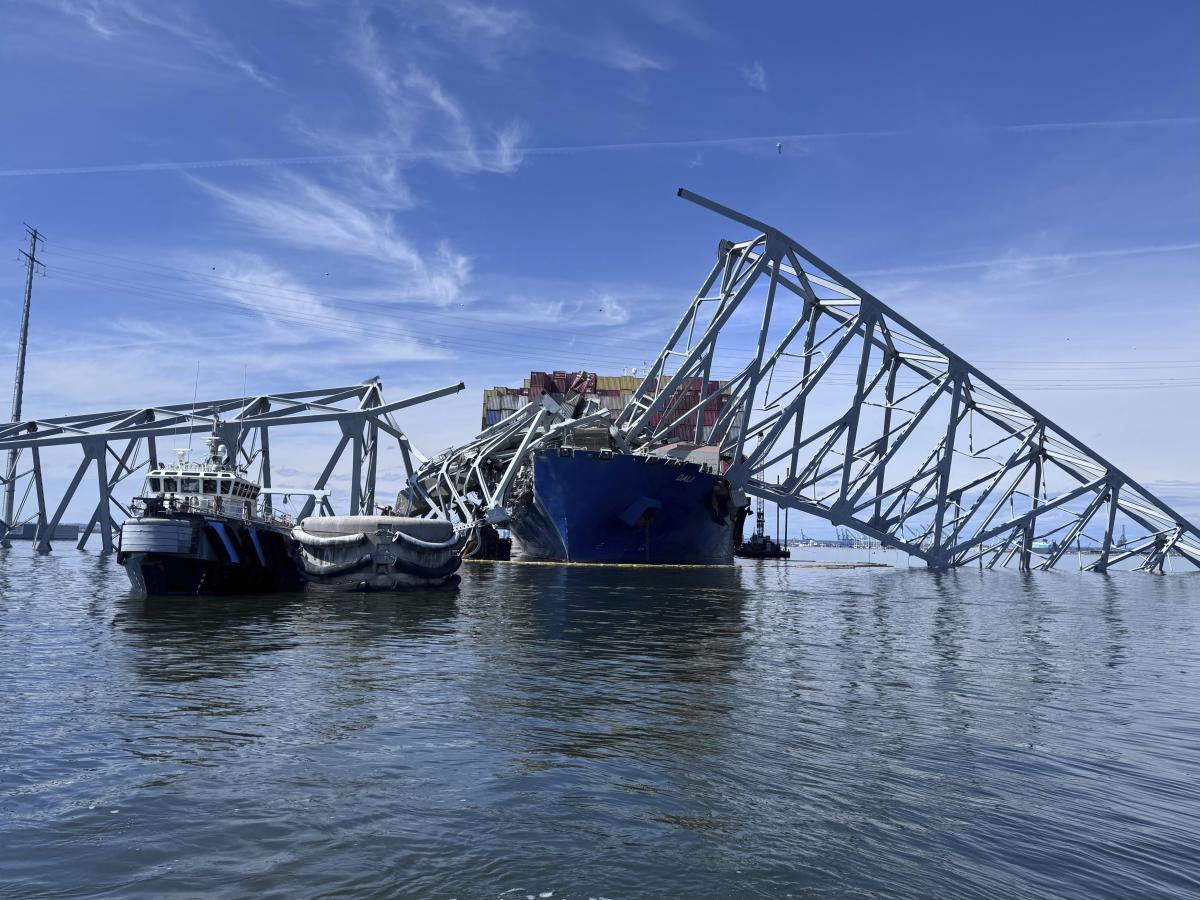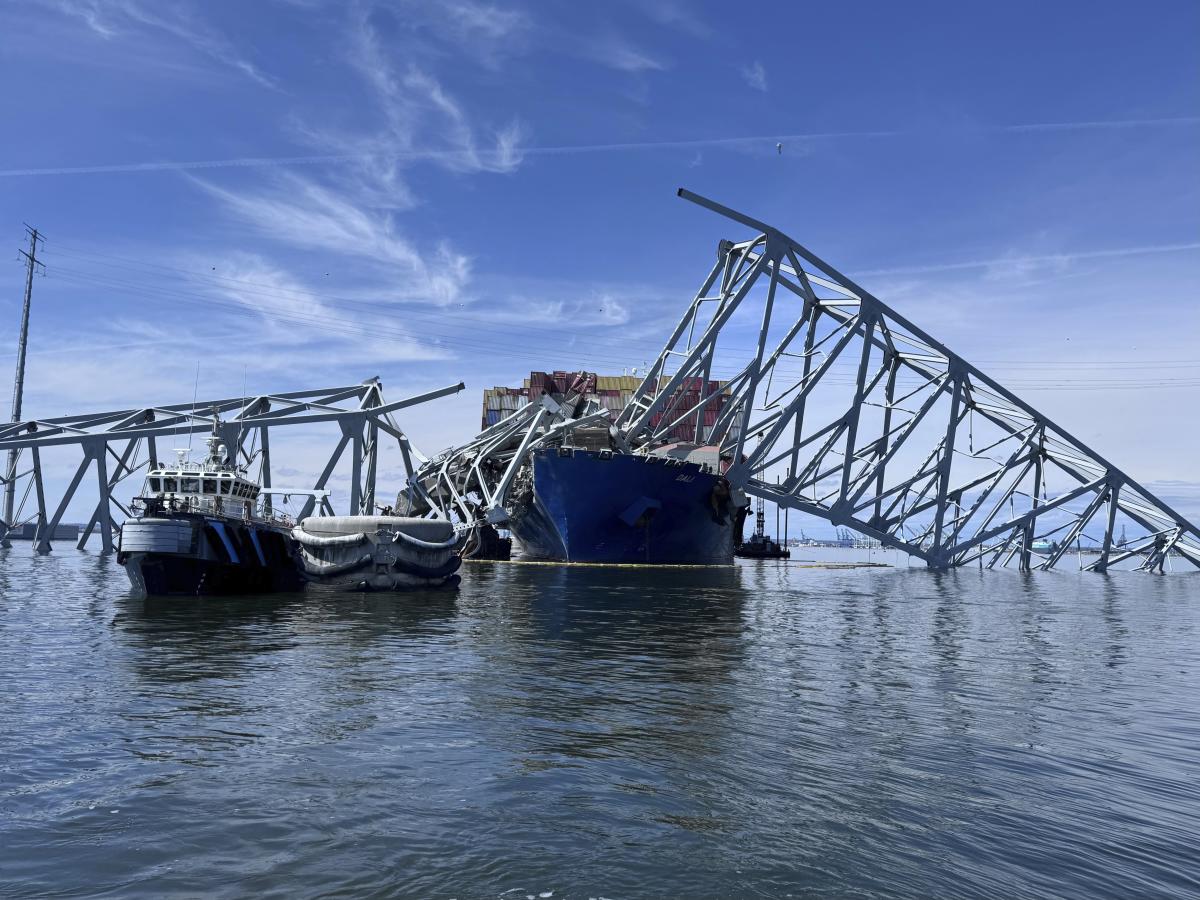
BALTIMORE (AP) — Maryland transportation leaders on Thursday approved a contract for rebuilding the Francis Scott Key Bridge several months after the 1.6-mile (2.6-kilometer) steel span collapsed under the impact of a massive container ship that lost power and crashed into one of its supporting columns.
In the immediate aftermath of the deadly March 26 collapse, officials quickly promised to rebuild the bridge — a longstanding Baltimore landmark and vital piece of transportation infrastructure.
They cited a 2028 completion date and estimated the project would cost $1.7 billion and would include significantly more pier protection to better defend against future wayward ships.
At a monthly meeting Thursday morning, the Maryland Transportation Authority board awarded a $73 million contract for the first phase of the project to Kiewit Infrastructure, which calls itself “one of North America’s largest and most respected engineering and construction organizations.”
Bruce Gartner, executive director of the Maryland Transportation Authority, said the contract award signifies a big step forward in the recovery and rebuild process.
“This really represents such an order of magnitude bigger than all our previous milestones,” he said in an interview Thursday. He said the agency hopes to release renderings of a preliminary design within the next few months, which will give the public an idea of what the new bridge will look like.
Kiewit was founded in 1884 to provide masonry services in Omaha, Nebraska, according to its website. Its notable past projects include the Fort McHenry Tunnel under Baltimore’s harbor, which opened in 1985. More drivers have been using the tunnel since the bridge collapse eliminated one of three water crossings that allowed them to bypass downtown Baltimore.
Gartner said the state has worked with Kiewit before and that the company has managed construction of major water crossings with maritime activity similar to the Key Bridge.
“We look forward to partnering with the Maryland Transportation Authority, many local subcontractors and suppliers, and our strong craft workforce to safely deliver and restore this vital transportation link in the city of Baltimore and the greater region,” the company said in a statement Thursday.
In announcing their recommendation to the board, state transportation officials said the company’s proposal was ranked first for its technical contents despite being somewhat more expensive than others.
Officials said the project will advance in two phases, with the first focusing on the design work and other necessary steps before construction begins, which could include demolition of the remaining pieces of the bridge that are still standing. Phase one is expected to be completed within a year.
Kiewit will have “exclusive negotiating rights” for the second phase, transportation officials said in a statement following the board meeting. “In the event a guaranteed maximum price is not agreed upon, the MDTA will deliver the work under a separate contracting mechanism,” the statement read.
Officials have said the new bridge will be somewhat taller than the old one to accommodate ever-larger ships entering Baltimore’s harbor. The original Key Bridge took five years to construct and opened in 1977.
The March bridge collapse killed six members of a road work crew who were filling potholes on the bridge when it came crashing down into the water below. Baltimore’s busy port was closed for months after the collapse and increased traffic congestion in the region remains a problem for drivers.
An FBI investigation is ongoing into the circumstances leading up to the collapse, including power outages experienced by the cargo ship Dali while it was still docked in Baltimore.
The state transportation board also on Thursday approved a proposal to remit the proceeds from a recent $350 million insurance payout to the federal government. They called the decision a show of good faith as discussions continue about whether the federal government will cover 100% of the cleanup and rebuilding costs. Chubb, the company that insured the bridge, made the $350 million payout to the state, officials said this week.
Ongoing litigation will ultimately determine other assignments of liability in the bridge collapse, which could become one of the most expensive maritime disasters in U.S. history.
Impacted businesses have joined Baltimore’s mayor and city council in filing claims arguing the owner and manager of the Dali should have to pay damages. Underwood Energy, a Baltimore-based company that transports hazardous materials, filed a new claim Thursday based on revenue losses associated with the bridge collapse. Hazmat trucks are not allowed in two tunnels under the Baltimore harbor, so those vehicles “now must make a 30-mile detour to cross the Patapsco River,” the complaint says.
The federal government generally picks up 90% of the tab and the state 10% when replacing disaster-damaged interstate highways and bridges, but the Biden administration and members of Maryland’s congressional delegation are pushing congressional lawmakers to approve a 100% reimbursement.
Officials have said they expect that federal taxpayers will eventually be made whole for replacing the bridge through insurance payouts and damages, but that may take a while.
___
Associated Press writer Brian Witte contributed from Annapolis.
EMEA Tribune is not involved in this news article, it is taken from our partners and or from the News Agencies. Copyright and Credit go to the News Agencies, email news@emeatribune.com Follow our WhatsApp verified Channel





